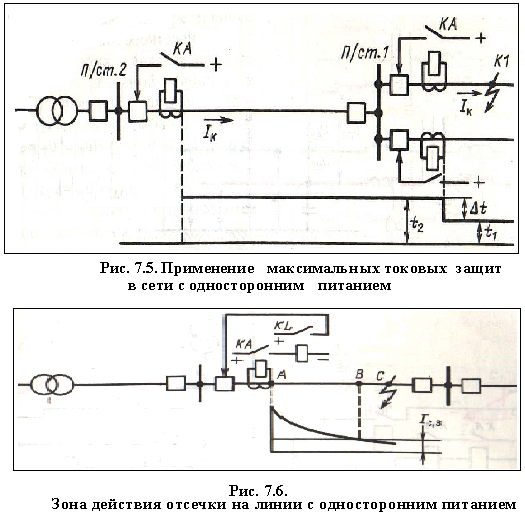In the outcome set, the order of columns is the same as the order of their specification by the select expressions. If a select expression returns multiple columns, they're ordered the identical way they have been ordered within the source relation or row sort expression. The FULL OUTER JOIN clause returns a outcome set that includes rows from each left and proper tables. There shall be cases when we must perform computations on a query result set and return the values. Performing any arithmetic operations on columns which have the NULL value returns null outcomes. In order to avoid such situations from happening, we are in a position to employ using the NOT NULL clause to restrict the results on which our knowledge operates. This class of expressions are designed to handle NULL values. The results of the expressions is determined by the expression itself. However, coalesce returnsNULL when all its operands are NULL. Below is an incomplete list of expressions of this class. This syntax allows users to carry out evaluation that requires aggregation on multiple units of columns in a single query. Complex grouping operations don't support grouping on expressions composed of enter columns. The NULL value kind is required in a relational database to represent an unknown or missing value. The COUNT() operate is used to obtain the whole number of the rows in the end result set. When we use this function with the star signal it depend all rows from the table no matter NULL values. Such as, after we count the Person table by way of the next query, it will return 19972. Third, your database examples are surprisingly good given the remainder of this, but you missed one of many qualities of NULL values that is helpful. For instance, taking the students_mark example, "select depend from students_mark" provides you with "2", and "select common from students_mark" provides you with "4.5". Unfortunately, these are different ideas and you need to use your programming to make up for it. In Spark, EXISTS and NOT EXISTS expressions are allowed inside a WHERE clause.
Similary, NOT EXISTS is a non-membership condition and returns TRUE when no rows or zero rows are returned from the subquery. WHERE, HAVING operators filter rows based mostly on the person specified situation. A JOIN operator is used to mix rows from two tables primarily based on a be part of condition. For all of the three operators, a condition expression is a boolean expression and can return True, False or Unknown . They are "satisfied" if the results of the condition is True. Remember that COALESCE returns the primary non-NULL value in the argument list. All of the last event date columns allow NULL because when a buyer is created and for a time frame after creation, these events have not really occurred. The column does not allow NULL so it is the last argument. If not one of the different occasions have occurred, the returned might be . By utilizing COALESCE I even have specified the order of the columns to check for the primary non-NULL value. For some knowledge types, MySQL handles NULLvalues in particular methods.
For instance, when you insert NULL into an integer or floating-point column that has the AUTO_INCREMENTattribute, the next number within the sequence is inserted. In some instances, the ISNULL perform is used with the the place condition however this usage method might lead to use indexes inefficiently. The purpose of the following query is to fetch rows of the MiddleName column whose values are equal to A or NULL. However, this query cannot use the created non-clustered index so it will learn all index pages after which return the appropriate rows. All fields of the row define output columns to be included in the outcome set. Let's see tips on how to filter rows with NULL values on a number of columns in DataFrame. In order to take action you have to use both AND or && operators. The above statements return all rows which have null values on the state column and the result is returned as the new DataFrame. The COALESCE() function accepts a quantity of enter values and returns the primary non-NULL value. We can specify the assorted data varieties in a single COALESCE() function and return the excessive priority data type.
Therefore, if we use ORDER By and GROUP by clause with NULL value columns, it treats them equally and sorts, group them. For example, in our customer desk, we've NULLs in the MilddleName column. If we sort data utilizing this column, it lists the NULL values at the finish, as shown beneath. For instance, using the "IS NULL" keyword when doing comparability operations involving NULL can both return true or false. Aggregate capabilities compute a single outcome by processing a set of input rows. Below are the principles of how NULL values are handled by aggregate features. We can ignore the bottom two rows as a outcome of the functionality is the same, as expected. If we have a look at the primary two, the NULL we inserted remains to be considered a NULL and can't be in comparison with an empty string. But once we have a look at the empty string that we inserted for the 2nd row, we don't have a NULL value, we nonetheless have an empty string. No conversion has occurred, and we can see that it is not thought-about to be a NULL within the query outcomes, but an empty string. PostgreSQL's behaviour follows the usual in its therapy of NULL values. Item is evaluated utilizing that row set's values of the columns. The resulting rows are joined as usual with the rows they have been computed from. This is repeated for set of rows from the column supply tables. In the database world, NULL means lacking data or not applicable. NULL isn't a value, subsequently, you cannot evaluate it with some other values like numbers or strings.
The comparison of NULL with a value will at all times end in NULL, which means an unknown end result. Results in an equivalent non-Nullable value for a Nullable kind. In case the original value is NULL the result is undetermined. Setting a string to NULL after which concatenating it returns NULLLook on the result set - the query returns NULL in the concatenated string if any a half of the string has NULL. For example, the individual in Row 1 doesn't have a center name. Its concatenated string is NULL as well, as a outcome of SQL can not validate the string value contains NULL. Acomputed column is a column in a desk the place the column value is set as the results of an expression. The expression can include different columns within the desk in addition to logic. By default, a computed column isn't saved within the desk; the value is determined whenever you use it; e.g. embody it in a SELECT statement. You can override the default conduct and store the value in the table by including PERSISTED to the definition. If you wanted to index the column, you'd add PERSISTED. When you viewCOALESCE in SQL Docs, you can see it underneath Transact-SQL (T-SQL) Reference / Language elements / Expressions. Generally speaking, you employ the COALESCE expression within the column listing of a SELECT assertion, though its usage isn't limited to the SELECT statement. COALESCE itself takes as arguments a listing of 1 to N expressions and returns the value of the first expression that is not NULL. Whenever you're using T-SQL to develop queries, you'll encounter conditions the place you must deal with NULL values.
You can follow best practices when developing your SQL Server database schema, however you continue to can not eliminate all NULL values. The simple fact is that you must allow NULL for some columns and some queries will return NULL values. The AVG () is used to calculate the common value of a end result set, that is, it sums all the values in that outcome set and divides that sum by the number of rows. One level to notice about the AVG() operate calculation is that NULL values won't be included in the common calculation. The IS NOT NULL situation is used to return the rows that comprise non-NULL values in a column. The following query will retrieve the rows from the Person desk which are MiddleNamecolumn value isn't equal to NULL values. The following query will retrieve the rows from the Person desk which are MiddleName column values are equal to NULL. By far the only and most simple technique for making certain a specific column's result set doesn't comprise NULL values is to use the IS NOT NULL comparability operator. After a query has produced an output desk it can optionally be sorted. If sorting just isn't chosen, the rows might be returned in an unspecified order. The actual order in that case will depend upon the scan and join plan types and the order on disk, nevertheless it must not be relied on. A explicit output ordering can only be assured if the sort step is explicitly chosen. The window frame syntax helps further clauses for row sample recognition. If the row sample recognition clauses are specified, the window body for a particular row consists of the rows matched by a sample ranging from that row. Additionally, if the frame specifies row pattern measures, they can be known as over the window, similarly to window functions. For more particulars, seeRow sample recognition in window structures. While engaged on PySpark SQL DataFrame we frequently need to filter rows with NULL/None values on columns, you are capable of do this by checking IS NULL or IS NOT NULL conditions. Therefore it's proved that NULL can't be in contrast with any value utilizing equality operators. Then how we can use the NULL if we cannot use any operator or mathematical operation?
PostgreSQL provides special statements and features to examine and check values towards NULL. The operator IS NOT NULL returns true if the expression or value in the column is not null. The IS NULL operator returns true if the expression or column is NULL. In this submit we are going to think about how NULL is utilized in creating tables, querying, string operations, and functions. Screenshots in this submit come from the Arctype SQL Client. Let's suppose that we want to create a table with sure fields that ought to all the time be provided with values when inserting new rows in a table. We can use the NOT NULL clause on a given field when creating the table. A subquery is an expression which consists of a query. The subquery is correlated when it refers to columns outdoors of the subquery. Logically, the subquery will be evaluated for every row within the surrounding query. The referenced columns will thus be constant during any single analysis of the subquery.
Clause might include any expression composed of enter columns or it could be an ordinal quantity selecting an output column by place . Some aggregate features return NULL when all input values are NULL or the enter information set is empty. If the 2 arguments are equal, the NULLIF function returns NULL. CASE evaluates each expression within the WHEN clause and returns theresult expression of the primary expression that is TRUE, else it returns the ELSE expression. The side-effect with CASE that I alluded to earlier is that the expression within the CASE that returns TRUE will get evaluated a second time when it is returned. If the expression is a query, underneath certain circumstances it may return a special end result when evaluated the second time. To eliminate this situation, we can make slightly code modification in the query in order that the query optimizer can use the indexes more effectively. The following query returns some rows as like the earlier one nevertheless it uses the indexes more efficiently. In this second instance, the COALESCE() perform returns the first non-null expression in the list of the columns. Using the above query pupil desk is created in our database. The pupil desk has three fields Name, Department, and Roll Number of a scholar. To insert values in the table we have to use the INSERT query. If you'd wish to learn extra about QUERY functions, especially how we can merge multiple rows into one you should check out our illustrated step-by-step article. Is specified, the outcome set is restricted to the precise variety of main rows decided by the depend. Below is a whole Scala instance of how to filter rows with null values on chosen columns. In PySpark, utilizing filter() or where() functions of DataFrame we will filter rows with NULL values by checking isNULL() of PySpark Column class.
In the second example, we are comparing 10 with 100 and in that case, it'll return 10 the primary value. Let's do some interesting comparisons, which is ready to clear up the idea of NULL in PostgreSQL. In the following code snippet, we're comparing 1 with 1 and the apparent result is "t" . This leads us to understand that the PostgreSQL equality operator offers us true when two values match. Similarly, the equality operator works for the textual value. In SQL, you might make a database query and use the COUNT function to get the number of rows for a particular group within the desk. Multiplying a decimal by NULL returns NULLNULL also performs an important role in string concatenation. Suppose you required the client's full name in a single column, and you concatenate them utilizing the pipe sign(||) . Currently only single column could be returned from the scalar subquery. Spark helps normal logical operators corresponding to AND, OR and NOT. These operators take Boolean expressions because the arguments and return a Boolean value.
The query returns solely two rows because the rows whose email column is NULL are grouped into one. You can use a NULL value in the INSERT statement to specify that the info is lacking. For example, the following assertion inserts a row into the leads table. Because the cellphone quantity is missing, so a NULL value is used. Adding a DaysSinceLastOrder column and a Status computed column are examples of the additional steps I prefer to take to make life easy for the enterprise users and ultimately myself. I attempt to present the results of calculations and likewise eliminate the necessity for the business users to need to cope with NULL values. I cannot remove each case where NULL will be returned however I can try. Using the above query we now have added the info to our desk. In this tutorial, you have learned the way to use the SQL COALESCE function to deal with NULL values within the database table. The query returns the identical outcome because the one which makes use of the COALESCE operate. The following statement returns Not NULL because it is the first string argument that doesn't consider to NULL. The COALESCE operate returns NULL if all arguments are NULL. The COALESCE operate accepts a variety of arguments and returns the first non-NULL argument. The following illustrates the syntax of the COALESCE function. There is still ambiguity if an ORDER BY item is a straightforward name that would match either an output column name or a column from the table expression. This would solely cause confusion when you use AS to rename an output column to match some other table column's name.

































































